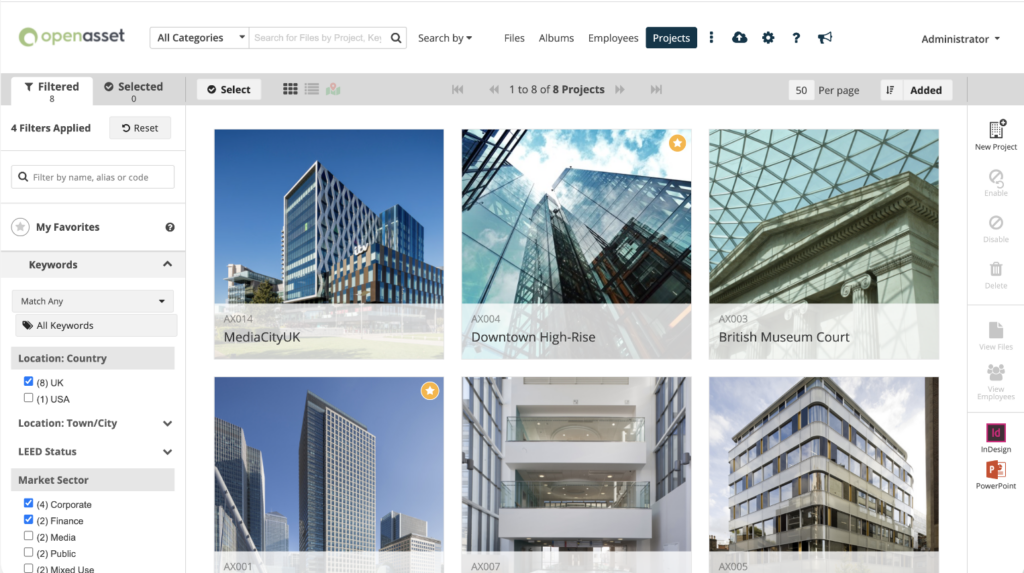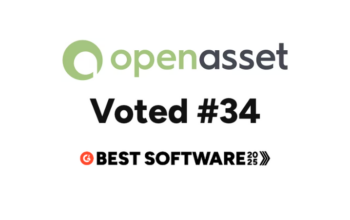A proposal writer is a skilled professional responsible for creating detailed, persuasive documents that outline a company’s offerings, solutions, or plans for potential clients or partners.
These documents, known as proposals or RFP responses, are crucial in securing new business opportunities, and partnerships. Professional proposal writers play a vital role in translating complex information into clear, compelling narratives that resonate with the target audience.
However, it’s not an easy job, and it requires various types of writer characteristics and proposal writer traits to become successful at proposal writing. Here are the top 18 proposal writing skills you need to succeed:
1. Attention to Detail
A skilled proposal writer should carefully analyze the RFP document they will respond to, noting every requirement and preference, no matter how small. This thorough approach ensures that the proposal matches the client’s expectations and meets all specified criteria.
Moreover, attention to detail in successful proposal writing involves careful proofreading and editing to ensure consistency and accuracy and manage deadlines and deliverables.
Thorough proofreading and editing includes checking for grammatical errors, spelling mistakes, and formatting issues. It also involves ensuring that the proposal is submitted on time, highlighting the importance of attention to detail at this stage.
“Not all RFPs are easy to follow. Attention to detail is crucial to making sure we pick up on all client requirements scattered throughout an RFP (including the “hidden” ones that aren’t neatly spelled out in the evaluation criteria!)“
—Rachelle Ray, Proposal Management Consultant, RMR Consulting
2. Time Management Skills
Successful proposal writers are masters of time management, balancing the need for quality with the urgency of deadlines. They know exactly how long it takes to write each section, allow time for team reviews, and incorporate a buffer for unforeseen issues. This careful planning helps ensure comprehensive, high-quality proposals are delivered on time.
Here are some strategies for effective time management:
- Remove Distractions: Eliminate interruptions by putting away smartphones, muting notifications, and signing out of email. Focus solely on writing to hit specific goals.
- Block Time for Writing: Use Parkinson’s Law to your advantage by setting strict yet reasonable deadlines, like completing certain sections before lunch.
- Eat the Frog: Tackle the most challenging tasks first, like drafting the initial proposal. This approach, coined by Mark Twain, helps set a productive tone for the day.
- Choose Progress Over Perfection: Avoid getting caught up in perfectionism. Focus on getting words on the page, then refine the content closer to the deadline.
- Use AI Tools: Skip the blank page struggle by leveraging AI tools like ChatGPT to generate first drafts. This allows more time to customize the proposal to the client’s needs.
These time management techniques allow you to produce high-quality proposals within tight timelines, making them invaluable assets in the fast-paced world of proposal writing.
3. Writing Skills
As you may know, RFP responses involve a lot of writing. Therefore, strong writing skills are fundamental to successful proposal writing. A love for writing often goes hand-in-hand with crafting compelling proposals.
A genuine enthusiasm for writing not only improves the quality of the proposals but also makes the writing process more enjoyable. This passion is reflected in the final product, creating proposals that are not just informative but also engaging and memorable.
Here are three essential writing skills every professional proposal writer should master:
Utilize Clear and Concise Writing
Clear and concise writing is crucial in proposal writing, as it helps convey your message efficiently and keeps the reader’s attention. This style involves choosing words deliberately, constructing precise sentences, and using proper grammar.
Moreover, maintaining a consistent tone and style throughout the proposal is vital for professionalism and coherence. Proposal writers should use consistent terminology and avoid unnecessary variations that could confuse the reader. It’s also crucial to eliminate jargon and acronyms unfamiliar to the client.
Here are some more tips for achieving clarity and brevity:
- Keep It Brief: Use short, direct sentences. Avoid wordiness and focus on the main points. This helps prevent digressions and keeps the content focused.
- Ensure Clarity: Be as clear as possible and leave nothing to interpretation. Use plain, inclusive language and avoid jargon and acronyms that may confuse the reader.
- Use Active Voice: Active voice makes your writing more engaging and direct. It also helps in making your message more impactful.
- Double-check: Proofread multiple times to catch errors and ensure accuracy. A professional tone is essential, and names should always be spelled correctly.
- Use Templates: Templates save time and provide structure. Use them for consistency and efficiency in your writing process.
- Incorporate Bullet Points: Bullet points make content easy to digest and highlight key points. They are beneficial for listing qualifications or features.
- Break Up Long Paragraphs: Keep paragraphs short, ideally 3-6 sentences. Use subheadings to organize content and guide the reader through key points.
- Use Visuals: Tables, graphics, and other visuals can make complex information easier to understand and are more likely to catch the reader’s eye during a quick scan.
“My favorite way to check for active voice is to use the “by zombies” approach. If you can add “by zombies” to the end of a sentence and it still makes sense, you’re using passive voice. It’s silly, but it’s easy for SMEs to remember and use it to check their own writing.”
—Rachelle Ray, Proposal Management Consultant, RMR Consulting
Practice Persuasive Writing
Successful proposal writers can craft persuasive proposals that resonate with the client’s needs. Top writers leverage customer insights to create focused and relevant proposals, avoiding unnecessary content that could distract or overwhelm the reader.
Persuasion in proposal writing involves building trust and respect with the potential client. A persuasive proposal addresses all potential concerns, minimizes perceived risks, and leaves the client feeling confident in their decision. The key is to communicate how your solution meets their needs and benefits their business.
Mastering persuasive writing can significantly increase the likelihood of converting proposals into closed deals. This skill allows you to not only win more work but also build a reputation for delivering compelling and client-focused proposals.
Learn How to Adapt Your Style
Adapting your writing style to match the client’s tone and language is necessary in proposal writing. Mirroring the client’s style and tone creates a sense of familiarity and trust, making it easier for the readers to connect with your proposal.
This ability demonstrates a deep understanding of the client’s preferences and helps create a proposal that resonates with them.
One effective strategy is to identify and use keywords and phrases from the RFP, aligning your language with the client’s expectations and terminology.
For example, if the RFP consistently uses terms like “innovative solutions” or “cost-effective strategies,” incorporating these phrases into your proposal can signal that you are in tune with the client’s priorities.
This technique not only aligns your proposal with the client’s language but also shows that you have thoroughly reviewed and understood their requirements.
4. Be a Team Player
Collaboration in proposal writing brings together diverse perspectives, helping create a comprehensive understanding of the project’s needs. Working with a team allows for the inclusion of various skills, knowledge, and experiences. This diversity can lead to innovative solutions, thorough research, and stronger arguments, ultimately producing a more robust proposal.
Additionally, involving stakeholders, such as partner organizations, ensures that the proposal accurately addresses the problem it aims to solve. Engaging key stakeholders and partners in the proposal development process demonstrates strong relationships and collaboration. This can enhance the proposal’s credibility and appeal to clients.
To collaborate effectively, establish open, regular communication. Ensure all team members understand the proposal’s objectives, their roles, and how their input contributes to the final document.
Moreover, clearly define deadlines, tasks, and responsibilities to ensure a smooth and efficient process. Additionally, implement strategies for resolving disagreements constructively to keep the process on track.
5. Research and Analytical Skills
Research and analytical skills are integral to successful proposal writing, as they work hand-in-hand to create well-informed and compelling proposals. To begin, research skills involve gathering relevant information, while analytical skills are used to evaluate and synthesize that information.
Professional RFP writers often act as research experts, diving deep into data to substantiate their proposals. For example, when proposing a new technology solution, they don’t just list features; they also provide data-driven evidence of its efficiency, such as improved processing times or cost savings. This evidence-based approach makes proposals more persuasive and competitive.
Additionally, analytical skills are crucial for evaluating the quality and relevance of research sources. They help in interpreting data, identifying key insights, and synthesizing information into a coherent narrative. This process involves assessing the credibility of evidence and ensuring that all claims are supported by reliable data.
Thorough research helps proposal writers understand the client’s requirements, objectives, and desired outcomes. This understanding allows them to tailor their proposals to meet specific needs and expectations. Additionally, researching the project helps identify potential challenges and competition, enabling writers to address these factors strategically.
6. Creativity and Storytelling
Creativity in proposal writing often means thinking outside the box to make your proposal stand out. While the primary goal is to communicate information clearly, a touch of imagination and originality can set your proposal apart from competitors. Just because it’s writing and not art, creativity shouldn’t be overlooked.
“People love stories. It’s how we connect on an emotional level with the client and differentiate from the competition. Remember that your people have stories, like the unique paths that led them to their current roles, and your projects have stories, like the challenges your team faced and overcame or the inspiration behind a design element.”
—Rachelle Ray, Proposal Management Consultant, RMR Consulting
Creativity can manifest in various ways, such as presenting data from a unique angle, using a compelling narrative, or incorporating storytelling elements. A catchy title, a relevant quote, a story, or even a well-placed joke can add flair and originality. These elements not only make your proposal more engaging but also help build rapport with the client.
Moreover, a narrative-driven approach can enhance the effectiveness of your proposal. Crafting a story that aligns with the client’s goals and needs demonstrates that you have a deep understanding of their project.
But, how can you craft a story? Use a friendly, conversational tone, address the reader by name, and show enthusiasm for both your work and the client’s vision. Be honest and transparent, avoiding unrealistic promises or exaggerations.
7. Flexibility and Adaptability
We’ve already discussed why adaptability is necessary when it comes to adjusting the proposal’s language, style, and tone. However, we didn’t discuss the importance of being flexible and adaptable when it comes to effectively shifting and pivoting as circumstances change.
The proposal writing process often involves navigating unexpected developments, such as last-minute client requests, adjustments to project scope, or alterations in deadlines. A flexible writer can quickly adapt their approach to accommodate these changes, ensuring that the proposal remains relevant and aligned with the client’s needs.
For example, if new information surfaces that alter the project’s focus, an adaptable writer can seamlessly integrate this information into the proposal, highlighting new benefits or addressing emerging concerns.
8. Project management
Among all forms of professional writing, proposal writing demands some of the strongest project management skills. When working on an RFP, the customer sets the deadline, questions, scoring criteria, and sometimes the maximum page length.
Proposal managers must juggle these elements, coordinate team members and external partners, develop strategies, and ensure the proposal is complete and accurate. This complex process requires excellent organization and attention to detail.
To improve project management, it’s crucial to start by mapping out all requirements and developing a clear project schedule. Following this schedule without deviation helps identify potential issues early on, allowing for proactive solutions rather than last-minute fixes.
In some companies, roles like proposal writers, managers, and designers are separate, while in others, one person may handle all aspects. Each setup has its pros and cons, but versatility in managing various tasks is often necessary in this field.
Project Management Software
Project management software, like Deltek or Procore, can be invaluable in managing proposal projects. Here are some key benefits:
- Easier Collaboration: With teams often spread across different locations, project management software facilitates seamless collaboration.
- Centralized Workroom: Having all data and research in one place simplifies access and keeps everyone updated with the latest information.
- Unified Communication: The software often includes features like voice and video conferencing, group chats, and messaging, ensuring all communication is centralized and accessible.
- 24/7 Access: Project management software allows team members to access and update the proposal anytime, anywhere, ensuring that the latest version is always available.
9. Meet Deadlines
We’ve already discussed time management skills in proposal writing, and meeting deadlines is part of being able to manage your time. A well-organized timeline ensures that all aspects of the proposal are completed on time, from initial drafts to final edits.
Effective deadline management involves setting clear milestones, allocating sufficient time for reviews and revisions, and allowing for unexpected delays. Utilizing project management systems and maintaining open communication with team members can help track progress and address any issues promptly.
Prioritizing tasks and adhering to deadlines means you can deliver high-quality submissions that meet client expectations and stand out in a competitive market.
10. Leverage Technology and Stay up to Date
If you’re looking for continuous improvement and efficiency, technology is your answer. Utilize software tools built to help you create more proposals, like OpenAsset.
OpenAsset is a digital asset management (DAM) solution that streamlines the proposal development process by organizing and managing digital assets, making it easier to access relevant images, documents, and templates. This not only saves time but also ensures consistency and quality across proposals.

In addition to using technology for organizational purposes, successful proposal writers stay up to date with the latest trends and best practices in the industry. This includes keeping up with new software developments, proposal writing methodologies, and market trends.
For example, understanding the latest digital marketing strategies or data security standards can help writers tailor their proposals to reflect current best practices, making their submissions more relevant and appealing to clients.
Continuous learning and adaptation are key to maintaining a competitive edge. Proposal writers can attend webinars, participate in industry conferences, and read up-to-date resources (like you’re doing now) to stay informed.
| Hand-picked related content: Unleash efficiency within design and proposal workflows by watching our OpenAsset + Affinity Webinar now. |
11. Strong Listening and Interviewing Skills
Listening and interviewing skills are crucial, especially when working with Subject Matter Experts (SMEs) for proposals. These skills help gather essential information needed to create effective material. Here are some tips that can help you improve your listening and interviewing skills:
- Approach with a Beginner’s Mindset: When interviewing SMEs, approach the subject with a beginner’s mindset. This perspective helps identify and clarify steps and knowledge that experts might overlook due to familiarity.
- Preparation: Before the interview, research the topic and prepare a list of questions to guide the conversation. Review existing training materials or documentation to understand the context and background.
- Establish Rapport: Begin the interview by introducing yourself and establishing rapport with the SME. Show genuine interest in their expertise and experience. Start with lighter topics and gradually move to more specific questions, helping the SME feel comfortable.
- Use Open-Ended Questions: Ask open-ended questions to encourage the SME to share their insights. Follow up with probing questions to delve deeper into their responses. This approach helps you gather detailed and nuanced information.
- Active Listening: Listen attentively to the SME’s responses without interrupting. Taking notes and asking for clarification when needed ensures you fully understand their points.
- Recording and Reviewing: If possible, record the interview to revisit the conversation later.
- Respect Time and Follow-Up: Respect the SME’s time by keeping the interview focused and on topic. After the interview, follow up with additional questions or clarifications as needed.
Remember to always thank the SMEs for their time and contributions, acknowledging their role in the success of the project.
Effective interviewing and active listening lead to richer content and a better understanding of the subject matter. These skills are essential for creating accurate and engaging instructional materials that meet learners’ needs.
12. Understanding and Addressing the Client’s Goals
An effective project proposal begins with a clear understanding of the client’s challenges and objectives. Focusing on the client’s point of view and offering a customized solution makes your proposal stand out as a thoughtful and well-prepared response to their needs. This, in turn, enhances the likelihood of engaging the client and securing the project.
Rather than starting with your qualifications, focus on how your services can benefit the client. This client-centered approach demonstrates that you’re not just offering a service but a tailored solution to their specific needs.
To create an impactful proposal, tailor the content and tone to the client’s unique situation. Clearly outline how your services will help achieve the project goals and address the client’s concerns. Be specific in aligning your proposed solutions with the objectives discussed or outlined in the project brief.
Start with a personalized proposal introduction that reflects your understanding of the client’s business, industry, and recent achievements. This personalized approach captures their attention and shows that you’ve done your homework.
Following this, present a solution-oriented narrative that highlights how your products or services can resolve their specific challenges and help them achieve their goals.
Furthermore, include concrete examples or case studies to illustrate how you’ve successfully addressed similar issues for other clients. This not only builds credibility but also provides tangible evidence of your ability to deliver results.
13. Strategic Thinking Skills
Strategic thinking involves understanding the client’s needs and aligning the proposal’s strategy to meet them effectively. It also requires analyzing the competition and crafting high-scoring proposals that improve the organization’s chances of winning.
Successful proposal writers excel at strategically highlighting their company’s unique strengths. This goes beyond simple self-promotion; it’s about positioning the company in a way that directly resonates with the client’s specific needs.
Deeply understanding these needs means you can craft a tailored response that showcases the company’s specific advantages and capabilities.
A strategically crafted proposal not only meets the basic criteria but also captures the client’s imagination, leaving a lasting impression. It positions the company as a strategic partner capable of delivering exceptional results and exceeding expectations.
14. Be Empathetic to Connect With the Client
As we’ve discussed, writing a client-centric proposal involves identifying the client’s needs and addressing them. However, to stand out in today’s competitive environment, proposals must also appeal to the client’s core buying emotions.
“It’s important to remember that people have challenges, problems, and goals – projects on their own don’t. Dig deeper than “schedule is an issue” – what happens if the project isn’t completed on schedule? How will that impact the people behind the project, or the end users?”
—Rachelle Ray, Proposal Management Consultant, RMR Consulting
People buy with emotion and rationalize with logic. Empathetic proposals connect emotionally with the reader by understanding not just what the client needs but why they need it. This understanding helps articulate how the proposed solution aligns with the client’s goals, easing their concerns and building trust.
Moreover, empathy should be integrated throughout the proposal process, from initial client interactions to final submission. This involves using the client’s language and terminology, demonstrating a deep understanding of their company culture and preferences.
Lastly, an empathetic approach shows that you prioritize the client’s best interests, creating a strong foundation for a long-term partnership.
This goes beyond just selling a product or service; it demonstrates a commitment to the client’s success and builds a connection that can influence their buying decision. This level of understanding and dedication can set your proposal apart and foster lasting client relationships.
15. You Can Excel Independently
While teamwork is essential in proposal writing, the ability to work independently is equally important. Proposal writers often need to manage their tasks, meet deadlines, and produce high-quality work without constant oversight. This independence allows them to focus deeply on their writing, research, and analysis, ensuring a polished and coherent final product.
For example, working independently allows proposal writers to dive deeply into their tasks without the distractions that can come from frequent meetings or team discussions. They can concentrate on writing, research, and analysis, giving each component the attention it requires.
16. Know When to Ask For Help
A professional proposal writer recognizes the importance of seeking help when needed. Whether it’s asking for clarification on client requirements or double-checking complex information, reaching out for assistance ensures accuracy and completeness.
This proactive approach helps avoid misunderstandings and ensures the proposal aligns with the client’s expectations.
17. Know When It’s Time for a Break
To maintain productivity and avoid burnout, skilled proposal writers understand the importance of taking breaks. With the constant tight deadlines of RFPs, taking regular breaks is crucial to prevent burnout.
The most successful proposal writers understand this and schedule downtime between major projects to recover and recharge their creative energy before tackling the next RFP. This allows them to return to work with a fresh perspective. This balance helps sustain creativity and focus throughout the proposal writing process.
Similarly, the most effective proposal teams recognize the importance of rest, with leadership encouraging their members to leave early, take time off, or focus on lighter tasks between major RFPs.
18. Understanding Your Losses
Successful proposal writers are not only competitive and driven but also committed to continuous improvement.
When a proposal is not accepted, they don’t merely move on to the next opportunity; instead, they take a proactive approach to understanding the reasons behind the loss. This introspection involves a thorough analysis of the feedback received, if available, or a careful review of the proposal and the competitive landscape.
The insights gained from this analysis are invaluable for refining future strategies. Professional RFP writers can adjust their approach, whether by enhancing their understanding of client needs, improving the clarity and persuasiveness of their writing, or developing more competitive pricing strategies. They may also identify the need for additional training or knowledge in specific areas.
Moreover, this process of reflection and learning is essential for professional growth. It helps proposal writers develop a deeper understanding of the proposal landscape, sharpen their skills, and build resilience.
Embracing a mindset of continuous improvement increases your chances of success in future proposals, ensuring they are better prepared to meet client expectations and stand out from the competition.
Create More Proposals With OpenAsset
Combining these characteristics of a good writer with OpenAsset means you can further improve your workflow and grow your AEC firm. The idea is simple: centralize AEC assets, create more proposals, and win more business. OpenAsset’s Digital Asset Management (DAM) platform makes AEC proposals simpler, faster, and more successful. That’s why 99% of customers renew.
Integrating OpenAsset into your proposal writing process, along with a commitment to ongoing professional development, can help you create more effective and impactful proposals.
This approach not only increases the likelihood of winning contracts but also contributes to building stronger client relationships and a more robust proposal development process. Embrace the power of technology and continuous improvement to elevate your proposal writing to the next level.





